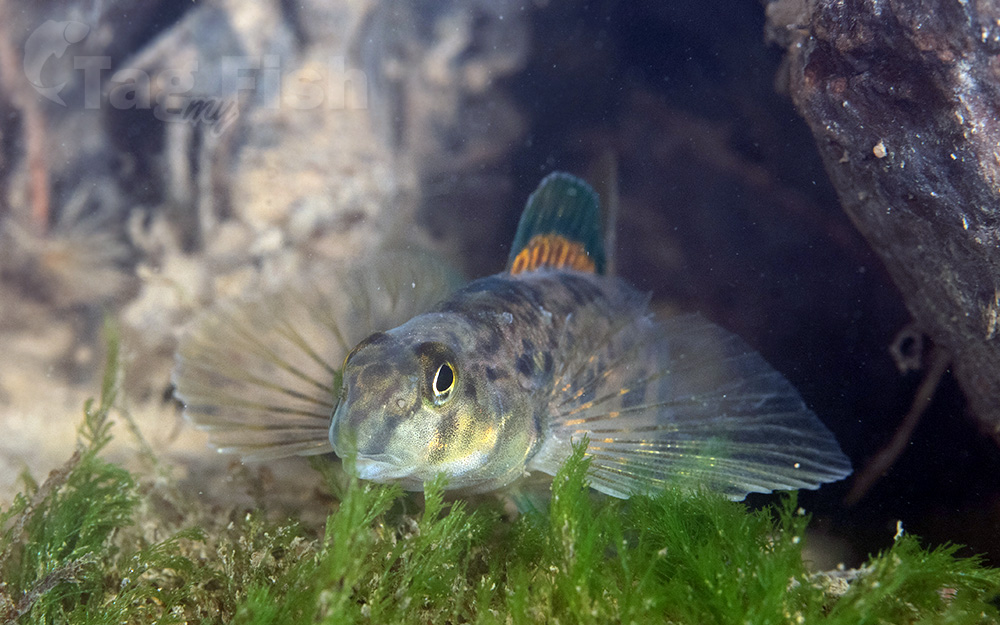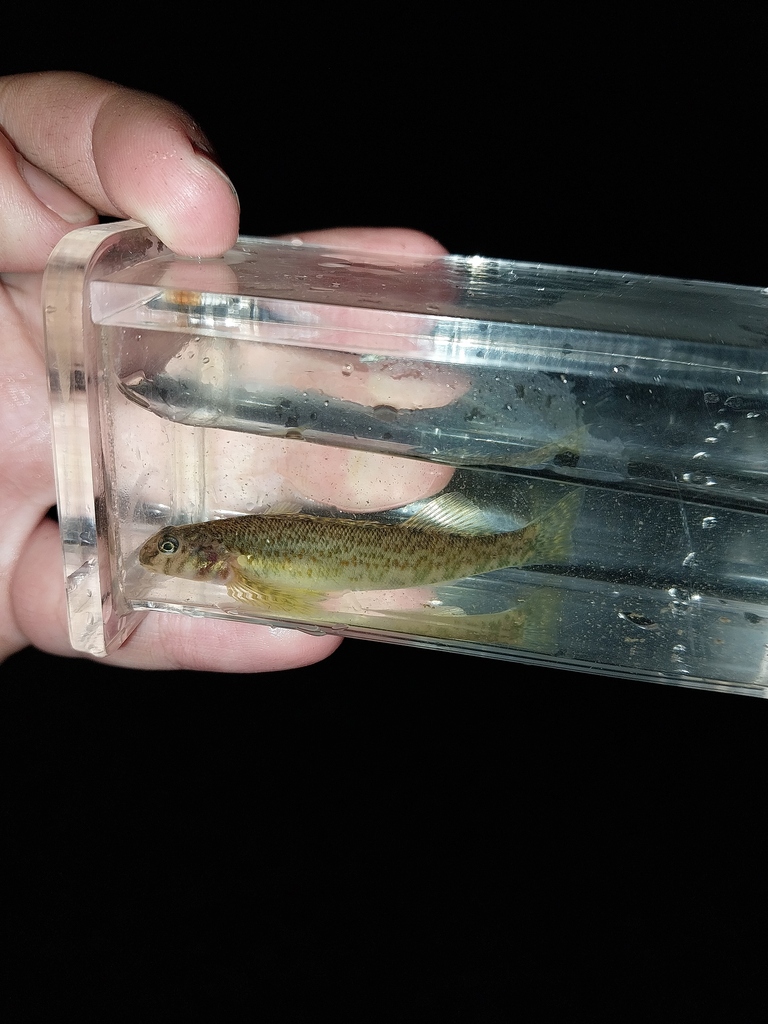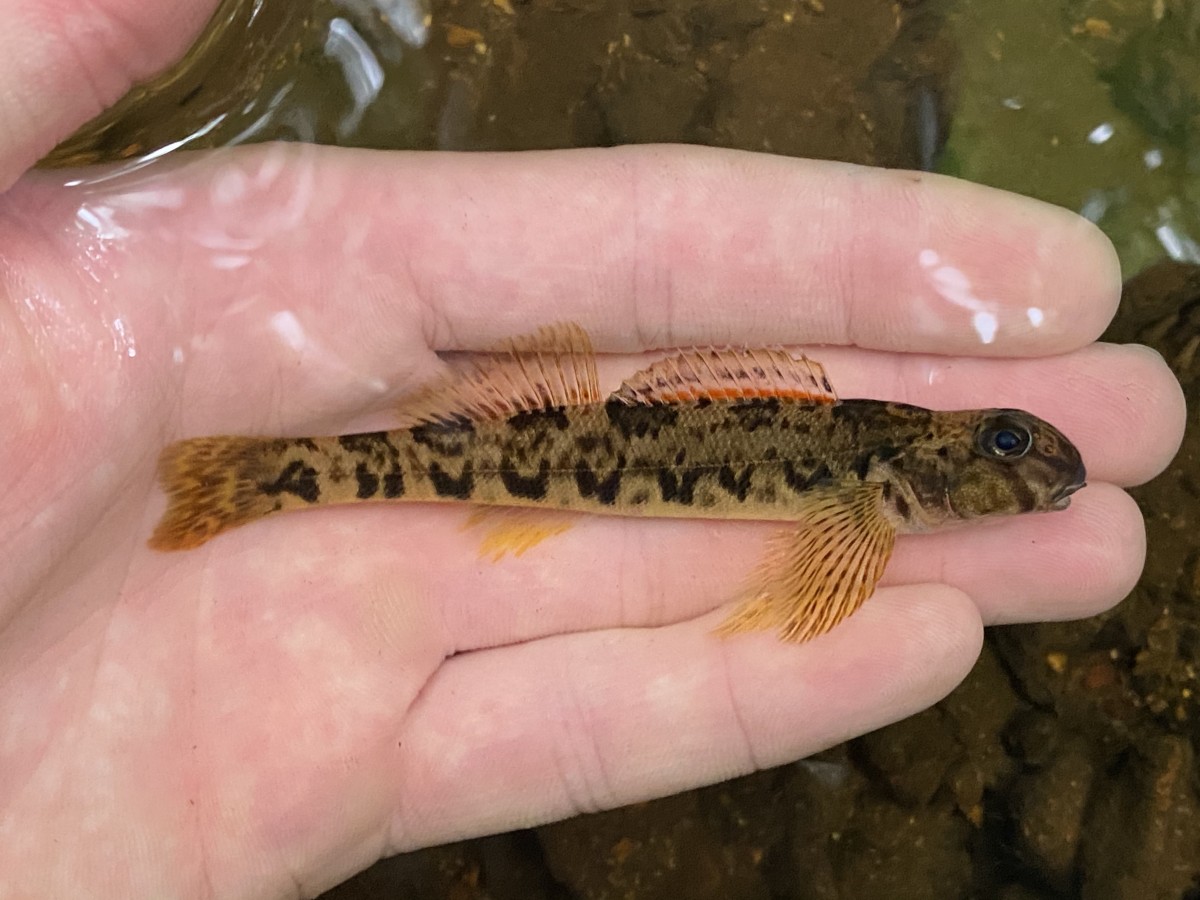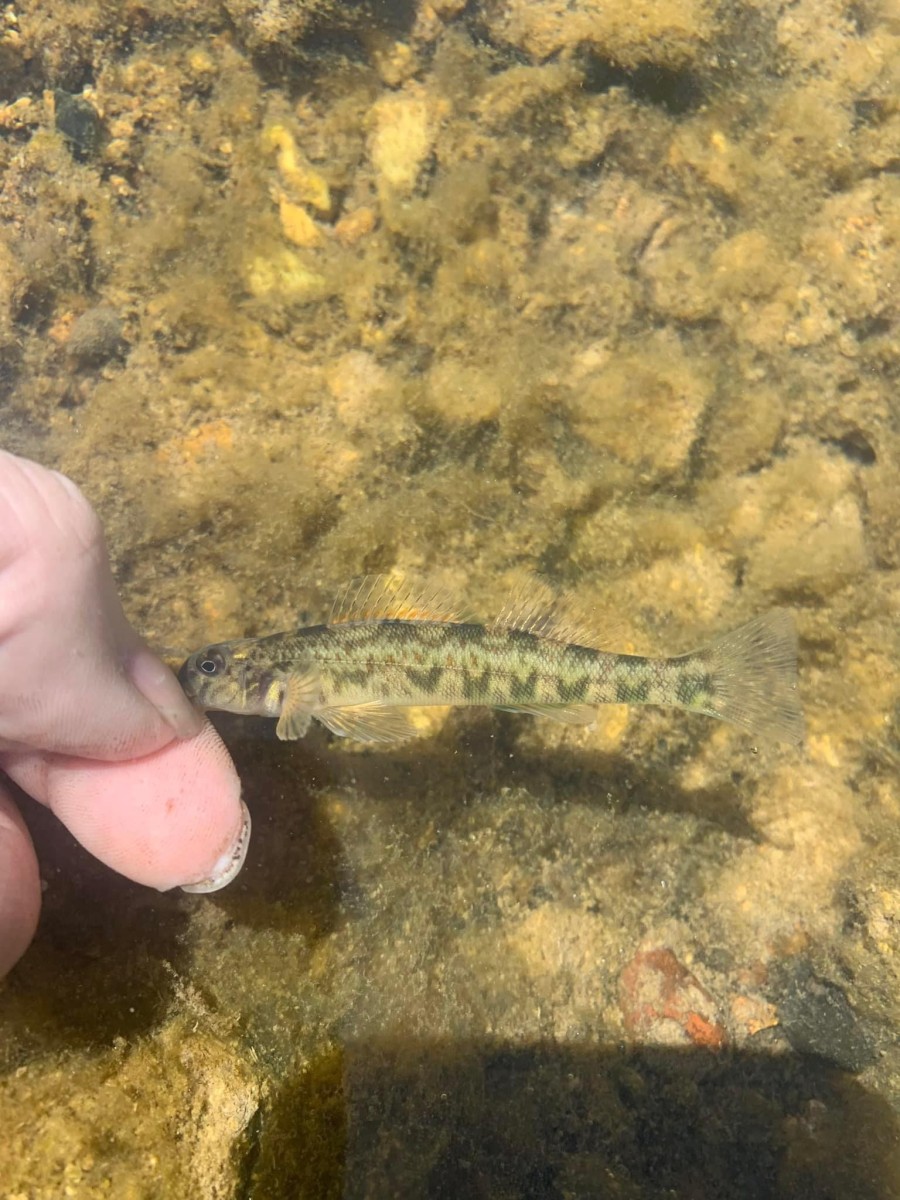Greenside darter
(Etheostoma blennioides)

Classification
General data
Greenside darters typically live for three to five years, grow to a maximum of 5.2 inches (132 mm) standard length and sexually mature at one to two years of age.
The greenside darters have an elongated body with a long and rounded snout. The dorsum is greenish-brown, with six or seven dark quadrate saddles and the sides with five to eight dark green, typically U or W-shaped blotches. The nape, cheeks, opercle, and belly are completely scaled, with the breast naked.
The anal fin has six to 10 rays (usually eight) and 13-16 pectoral fin rays, and both are bright green in breeding males; caudal fins are yellowish to clear; dorsal fin rays number 12-15, with red basal bands; breeding males have intensely bluish-green nasal and oral areas and sometimes black on the head.
Native Range: Great Lakes and Mississippi River basins from New York and Maryland to eastern Kansas and Oklahoma, and from Ontario south to Georgia, Alabama, and Arkansas; Atlantic Slope in Mohawk drainage, New York (Page and Burr 1991).
The Greenside Darter is probably introduced in the Potomac drainage in Maryland and Virginia (Jenkins and Burkhead 1994; Starnes et al. 2011). It was not collected in this drainage until 1954 when the first specimens were taken in Maryland. The first collections from the Virginia portion of the drainage were in 1964. Its recent appearance combined with its rapid range expansion suggest an introduction. This species is now established in creeks in Frederick County and the Potomac drainage in Loudon County, Virginia and the Chesapeake and Ohio Canal National Historical Park, Maryland (Jenkins and Burkhead 1994; Starnes et al. 2011).
It was first collected from the upper portion of the Susquehanna drainage in Pennsylvania in 1962 (Denoncourt et al 1977), in the New York portion in 1998 (Carlon and Daniels 2004; Neely and George 2006), and from the Maryland portion of the drainage in 2002 (Neely and George 2006).













